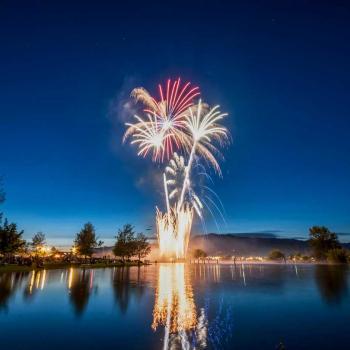Easter Sunday
Acts 10:34-43
Psalm 118:1-2, 14-24
I Corinthians 15:1-11
Mark 16:1-8 and John 20:1-18
This is the day that God has made, let us rejoice and be glad in it! This is the heart of the Easter proclamation – God’s new thing, the divine creativity that brings forth new life with every new day, and that creates life where death appeared triumphant.
On Easter Sunday, my practice is to read the passages from both Mark and John and a portion of Psalm 118. The gospel accounts present two different perspectives on the resurrection, reminding us that resurrection is ultimately indescribable and that early on the Jesus movement was comfortable with a variety of ways of articulating its most important event. Neither Jesus nor his resurrection can be encompassed by our theologies and rituals. Our words and worship point to the moon, to use a Zen Buddhist image, but are not the shining orb that guides our paths through life’s wilderness moments.
Mark’s gospel ends with the empty tomb. While some evangelical scholars, most particularly, Ben Witherington, suggest that an expanded ending to Mark has been lost, I find the poetic vision of Mark 16:1-8 transformative, whether or not a longer version once existed. Mark 16 leaves us hanging and wanting more. It says that the stone has been rolled away and that the future is open. Mark 16 begins with a sense of hopelessness – “who will roll away the stone for us” – and concludes with awe and amazement. The experience is so amazing that the women, who were the first to be given the Great Commission (“go and tell”) tell no one. Some things simply can’t be described: we have no words to borrow, simply images of events beyond our wildest imagination.
Mary Magdalene is a central figure in John’s Gospel as well. Once again, she receives a Commission to share the good news of resurrection and this time she runs to Peter and John with an improbable tale – Jesus’ body has disappeared. She is unnerved by the empty tomb and returns, grief-stricken, believing at first that Jesus’ body has been taken from the tomb. The grief she felt when her beloved friend died was unendurable and she needs closure. She needs to see the corpse as devastating as the sight of her beloved friend will be to ground her in reality and help her move on, albeit in pain and hopelessness. She pleads with a “gardener” for answers. She wants to pay her respects, anoint his body, and show her love.
It is in this encounter with One Unknown that her life is transformed. The Risen Jesus calls her name, “Mary,” and her life is transformed. She comes back to life and though she can’t fathom the resurrection, and has no theology to understand it, she believes and worships.
She wants to hug the Risen One, but Jesus cautions her, “Don’t hold onto me.” Is Jesus’ body too energetic for human touch? Is he not fully reconstituted? Or is there something more at work here? Could it be that Jesus is saying to Mary – and to us – “don’t hold onto static images of me, don’t localize me in space or time, or confine me to a particular spiritual body or institution”? From now on, Jesus can’t be localized in Galilee or Jerusalem, he will be everywhere. From now on, Jesus can’t even be localized to the tradition that bears his name. He will bring wholeness to all creation and persons of all cultures.
In that spirit, Peter affirms that God shows no partiality among nations and cultures. The resurrection is for all, salvation is for all. There are no resurrection-free zones or times. Resurrection is as real now as it was in the first century. It still brings new life to lost and vulnerable, and alienated and grieving, humankind. Resurrection even transforms those who, like Paul, are “untimely born.”
Today, we can open to resurrection power. We can awaken to resurrection in all the dead zones of life, trusting that God will revive us all, and trusting that we are to be agents of resurrection, bringing forth life in death-full situations in our time.












